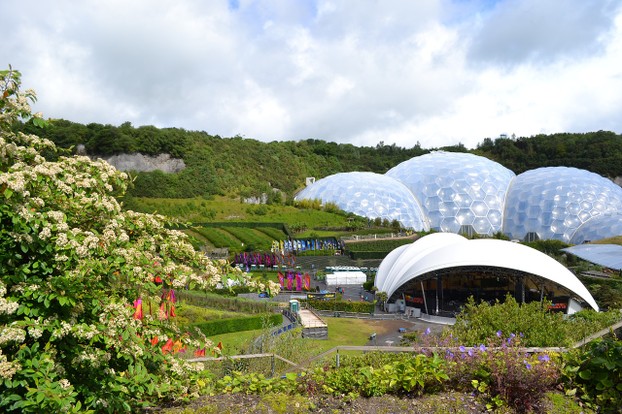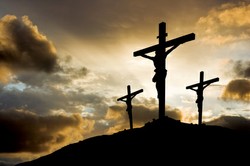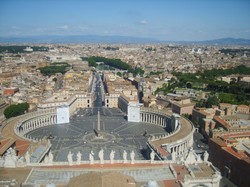To understand the first books of the Bible, from Genesis down to Second Samuel imagine four diferently-coloured strands which are woven together, then divided horizontally into nine to make the books that we know today. The Adam and Eve story is taken from the earliest source, known as the J source [though the six days of creation comes from the later P source. We know not whether J [the Yahwist source because it uses the name Yahweh/Jahweh for God] was an oral or written source, but it stems from the time of David or Solomon, maybe about 910 BC, but don't bank on dates being reliable. The source creator took the myths of the Middle East and reinterpreted them in the light of Israel's faith. It was a creative rendering of myth to fit it into a religious scheme.
The myth of Eden dealt with problems. Into the Hebrews' folk memory of being somewhere pleasant from which they were dispossessed the writer blended the question of the origin of suffering, of why did a good deity allow childbirth pains, why are men dominant over women and why does man have to perform grindingly hard labour. In fact, Feinberg, in Who Wrote the Bible,,believed that this source came from a female story teller or at least from stories told by females.
We need to understand the myth in terms of the conflict between the Hebrew faith and the idolatry of the Canaanites that had permeated Israel. For the exponents of the Hebrew God idolatry was the cause of suffering. One pagan goddess,Astoreth [Astarte] was worshiped under sacred trees.One form of the name, Asherah is associated quite often in the Hebrew Bible with sacred poles or trees. So it is possible that the tree of knowledge of Good and Evil is an allusion to the Asherah, and therefore the religious message is that worshiping the Asherah leads to disaster. The wisdom that comes from God is all good, but the wisdom that comes from the tree of knowledge is a mixture of good and evil, not true wisdom at all.
Identifying the serpent with the Devil is not the correct interpretation, for the earliest Hebrews knew nought of the Devil. The serpent was a symbol of pagan wisdom, but this wisdom as understood by the Canaaanites differed from the wisdom of the God of Israel. so following the pagan paths is shown to lead to suffering.The suffering was the expulsion from Eden.
The story aims to put the blame for evil on humans rather than God. We must note that while Adam attempts to shunt the blame onto Eve, God is having none of it and blames them both.Note also that an apple is never mentioned.
There is no mention of the term original sin, which is a Christian rather than a Jewish concept. What we see in the story of humanity from Adam to the flood is not the effects of a single sin, but an accumulation of sin leading up to Noah. Original sin was a theological concept developed to explain humanity's moral weakness, its inability to be truly spiritual.












 TheThousand Year Gardenon 11/26/2025
TheThousand Year Gardenon 11/26/2025
 Women of the Gospelson 10/11/2025
Women of the Gospelson 10/11/2025
 Religious Gardenson 08/25/2025
Religious Gardenson 08/25/2025
 Doctor of the Church: John Henry Newmanon 08/03/2025
Doctor of the Church: John Henry Newmanon 08/03/2025



Comments
It sounds like a pleasant place in an otherwise wilderness
Thank you for your comment below, in answer to my previous observation and question.
The fourth paragraph to the first subheading, Fatu hiva, advises us that "the Bible never says "the Garden of Eden" but says that God planted a garden in Edin, a term which means the Plain. Edin and the garden are conceptually distinct, but in Jewish thought the two become conflated and linked to the garden [paradise] of delight."
English Wiktionary associates Eden with Akkadian edinu ("desert, steppe") or the proto-Semitic root to dialectical Arabic for "abode, biding place, place of remaining" or the Semitic root for "duration, time" or Sumerian eden ("open country, plain").
The Sumerian correlates with the fourth-paragraph description of the plain designated Edin.
Does all the above entail our envisioning Eden as open country instead of as a garden?
It is probably a similar route.
Thank you for your comment below, in answer to my previous observation and question.
Online sources account for emerald ash borer (EAB) appearances by wooden shipping crates from their native northeast Asia.
Does that account for their appearances on the east-pond side?
We have some problems with emerald ash borer. But die back did much of the damage.
Ash dieback appears to be the ash-tree challenge on the eastern pond side.
This west-pond side associates ash-tree problems more with emerald ash borers (EAB).
Do British Isles-ers have an EAB dilemma in addition to ash dieback?
Thank you for your comments below, on Jul 8, 2017, and Mar 9, 2022, in answer to my previous observations and questions Jul 8, 2022, and Mar 8, 2022.
Some Unitedstatesians associate ash-tree resistance with astute pruning and sanitation and without fungicidal applications. They cite elm-tree disease reversions from the repeated wounding that fungicide applications cause.
Do the British-Isles ash-tree species suffer fungicidal treatments or do they submit to savvy pruning and sanitation?
There are ash trees with some resistance to the fungus. There is hope.
Talking of Styal. When I was in my teens my brother [Tony] and I used to take the two younger children to Styal, where we would enjoy the woods. Happy days!
Thank you for the answer to my question about American chestnut tree resistance and general tree resistance. I found the answer on Veronica's A Walk Out in Styal Cheshire, where the question should have been posed, instead of here.
It's sad about ash trees.
I think that the rivers in the Eden story are real rivers and are found in the Iran/Turkey region.
[For my response to your other question I will go to the article on Styal. ]